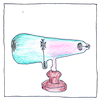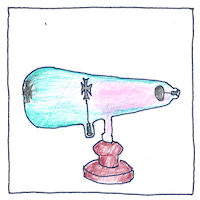William Crookes
electromagnetism

|
Crookes tube
A Crookes tube was a Geissler tube but with a better vacuum, and instead of demonstrating glowing discharges, a Crookes tube demonstrated cathode rays. The rays emanated, strangely, at a right angle to the cathode and travelled in a straight path toward the anode, unless, as Crookes showed, a magnetic field caused them to bend as though they carried a negative charge.
Electromagnetics
Playing with a Crookes tube, Wilhelm Röntgen discovered rays that passed through opaque materials and called them X-rays. * Wondering what corpuscles could be shooting from cathode to anode of a Crookes tube, J. J. Thomson calculated their charge-to-mass ratio, showed their mass was about a thousandth of a hydrogen atom. George Francis FitzGerald argued that George Johnstone Stoney’s term for the standard unit of electricity, the electron, should name Thomson’s corpuscles.
Cathode ray vision
Cathode rays, negatively charged, and can be deflected by a magnetic field or made to rapidly sweep side to side, top to bottom, to illuminate a test pattern on a phosphorous screen, or to bleep from eleven to three.



Before Thomson, people thought that the atom was indivisible and had no idea that small clouds of electrons buzzed about atomic nuclei.
See also in The book of science:
Readings in wikipedia: